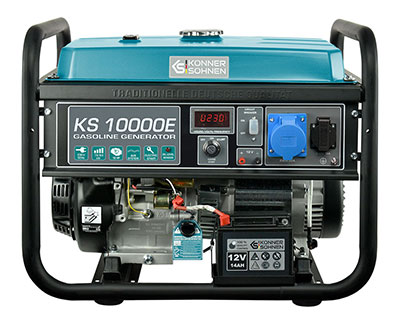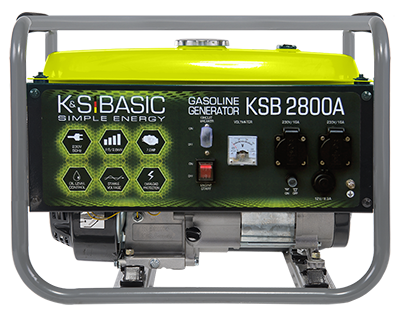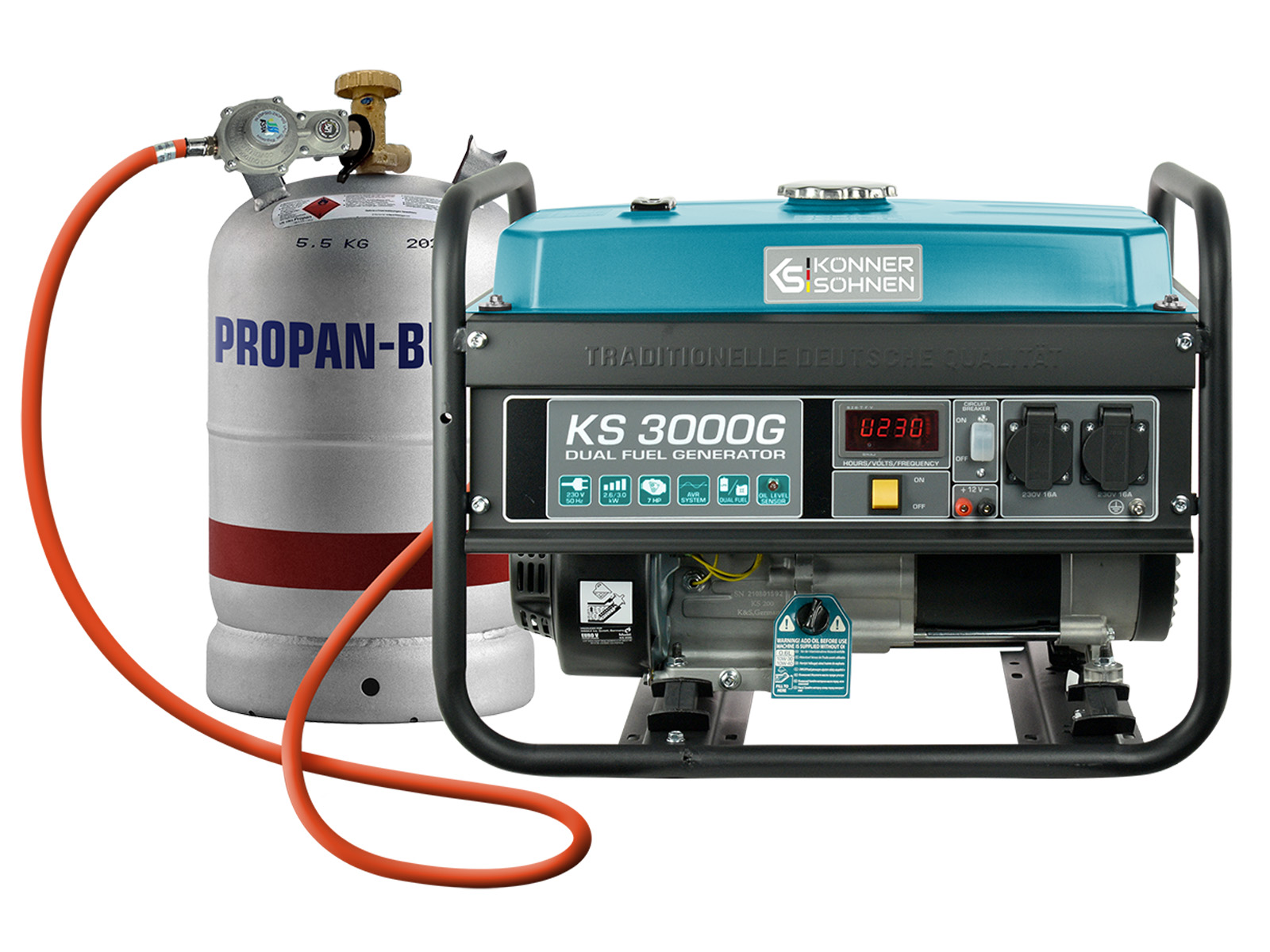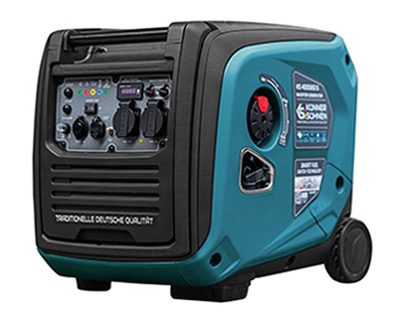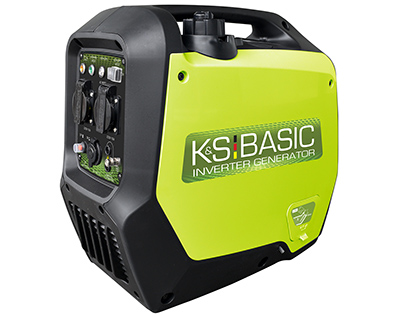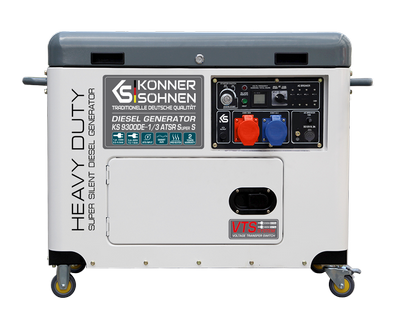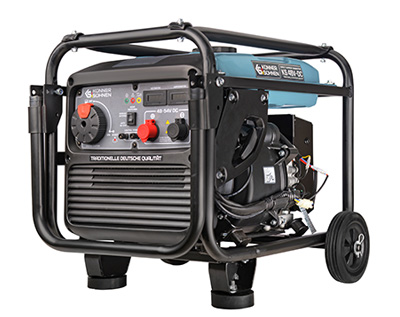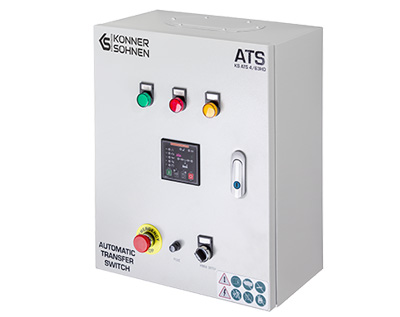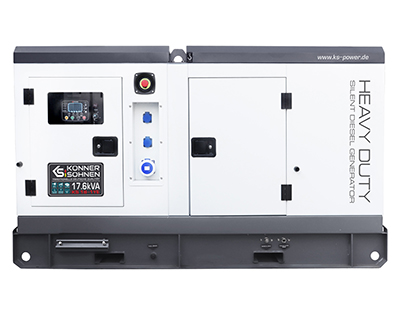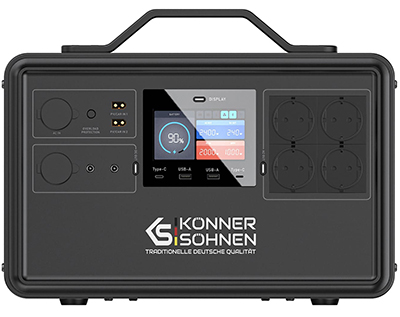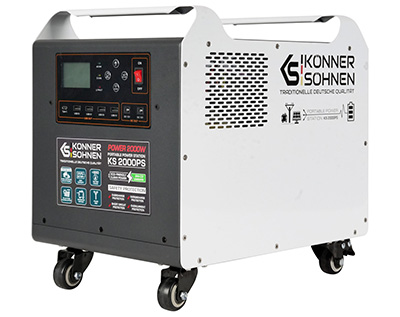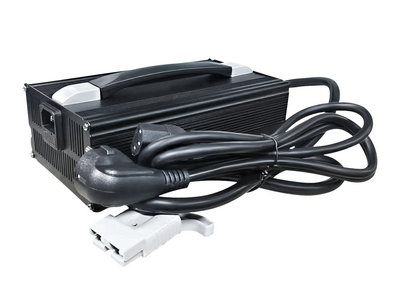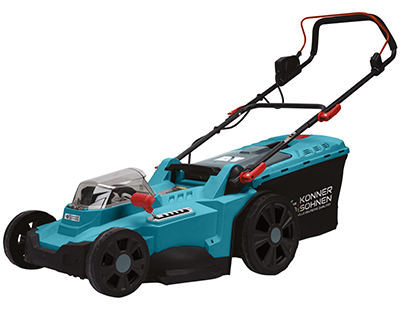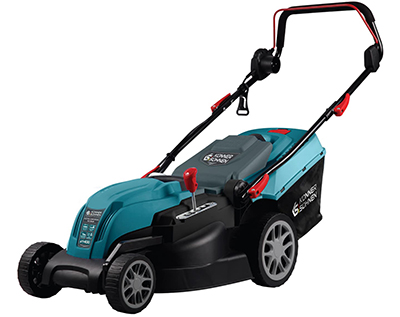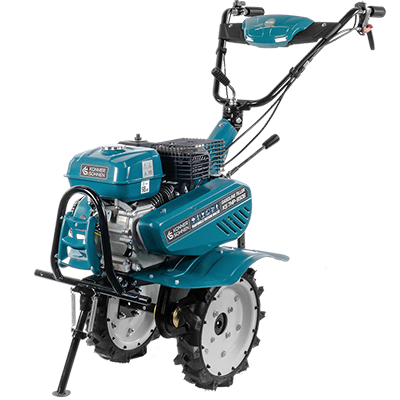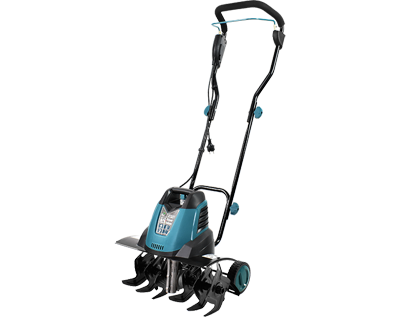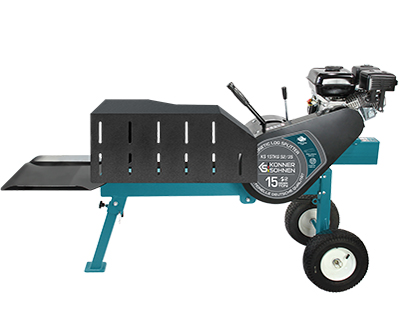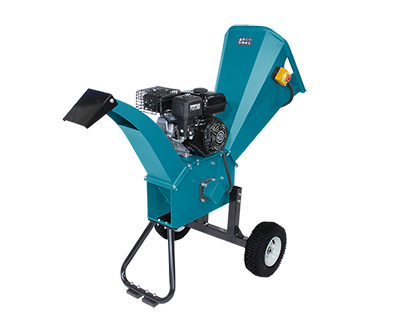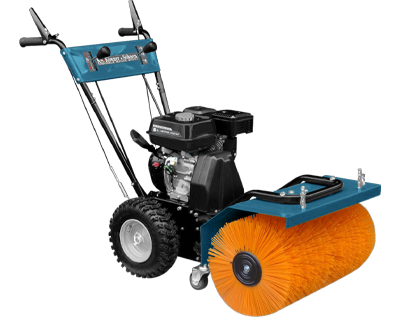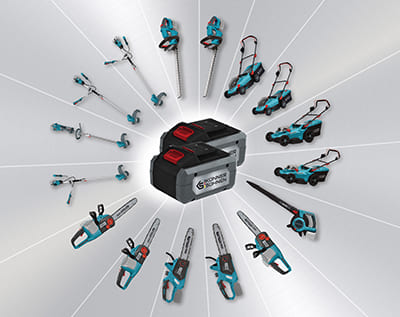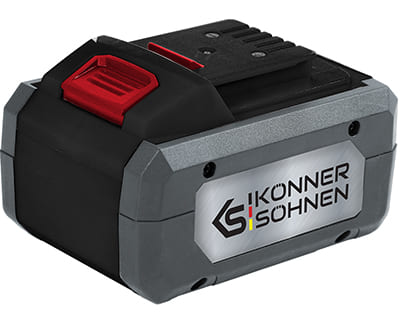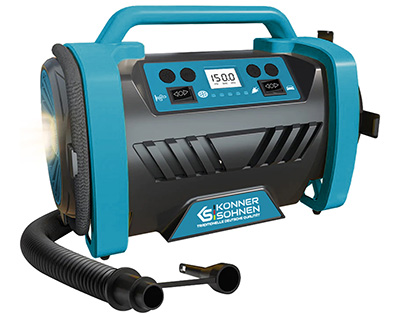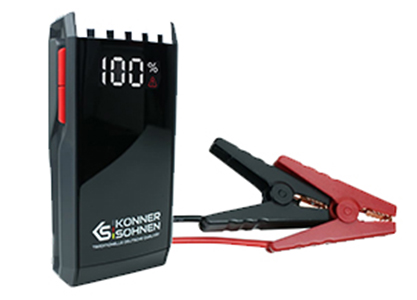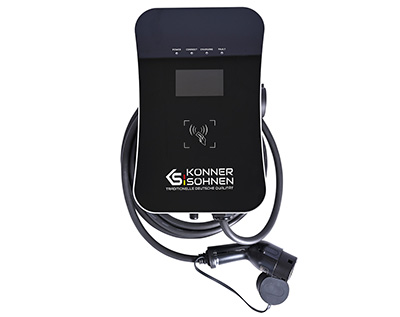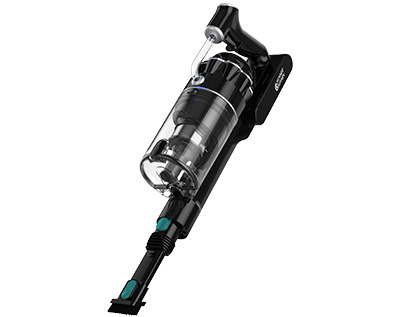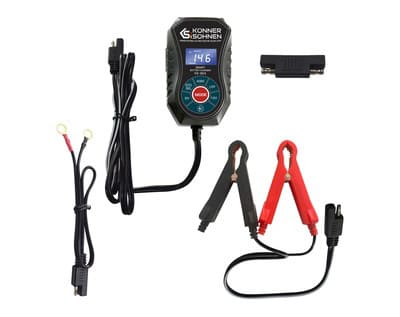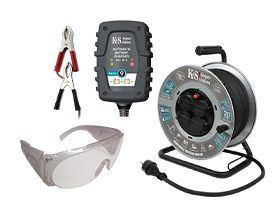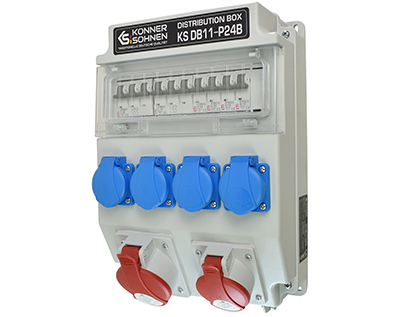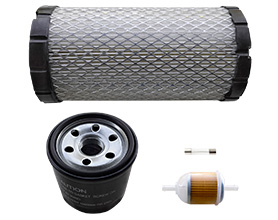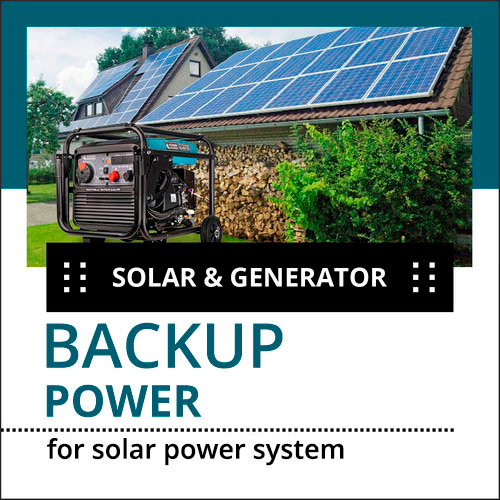
More and more households are being equipped with different types of PV systems. Modern PV modules are already able to convert around 20% of the sun's energy into electricity, which makes this type of electricity generation very attractive.
Backup power generator for solar systems without and with battery storage
The heart of the PV system is the inverter. There are on-grid, hybrid and off-grid inverters.
On-grid and hybrid inverters are synchronized with the public grid and are able to feed excess energy into the public grid.
The backup power generator for solar systems cannot replace the public grid for on-grid and hybrid inverters because it cannot absorb the excess energy. Feedback from the inverter can damage the generator.
An exception can be inverters, which have an extra generator input, where feedback can be 100% prevented by built-in current sensors. However, such a generator must have voltage parameters that are acceptable for the inverter, which is not always the case with a conventional power generator.
In the event of a power failure, the backup power generator in a solar system with an on-grid inverter should only supply the electricity consumers who are entitled to backup power, with the inverter and any existing AC storage remaining on the side of the public power grid and being disconnected at all poles with a transfer switch, so that the generator is not running in parallel with the inverter or AC power storage.
Connection diagram of the 230V backup power supply for solar system when using inverter generators without ATS function:
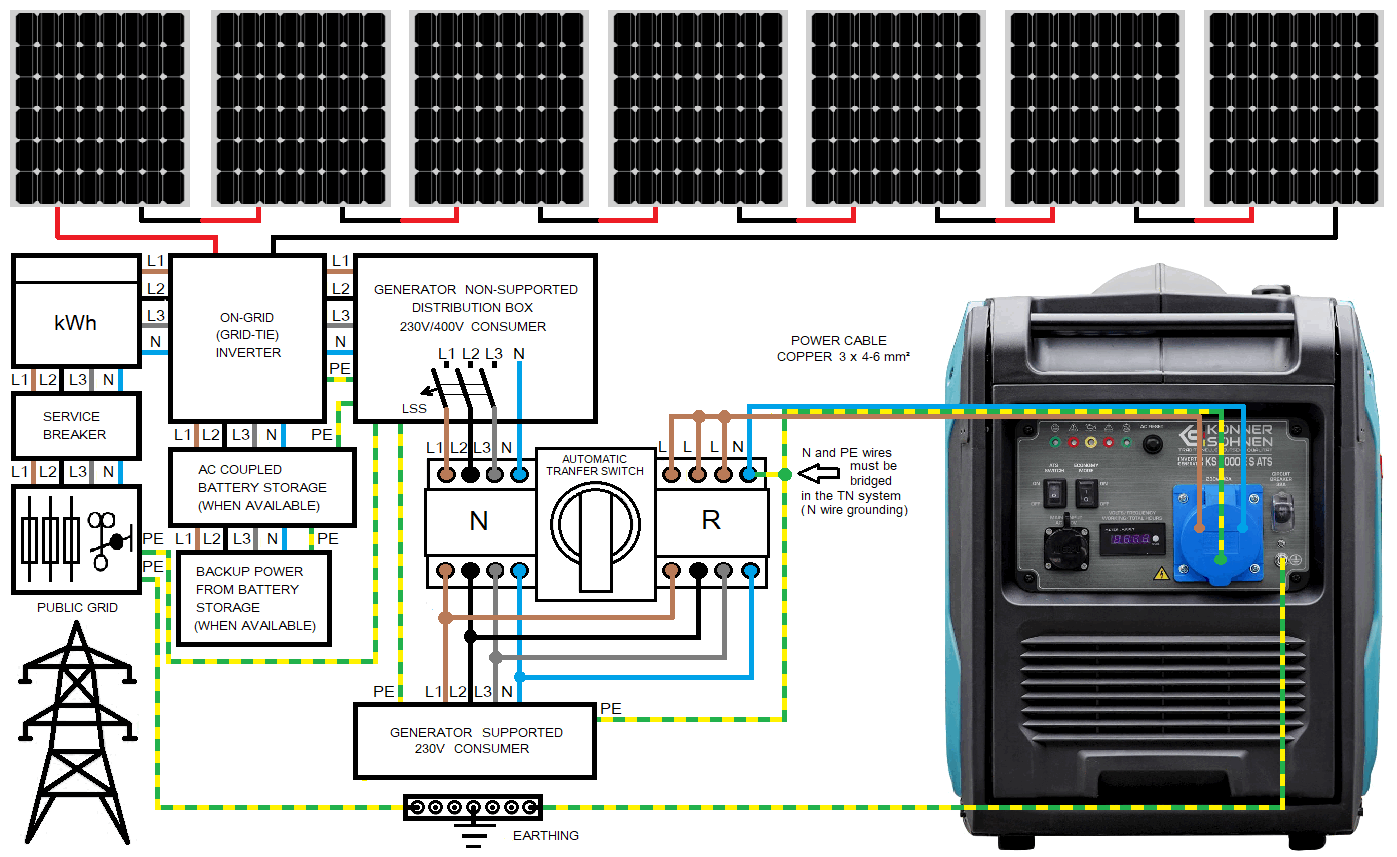
An automatic switch to backup power supply for the 230V power consumers is also possible when using generators with ATS function.
Connection diagram of the 230V backup power supply for solar system with the inverter generator KS 5500iES ATSR with an external ATS unit KS ATS 4/25 Inverter:
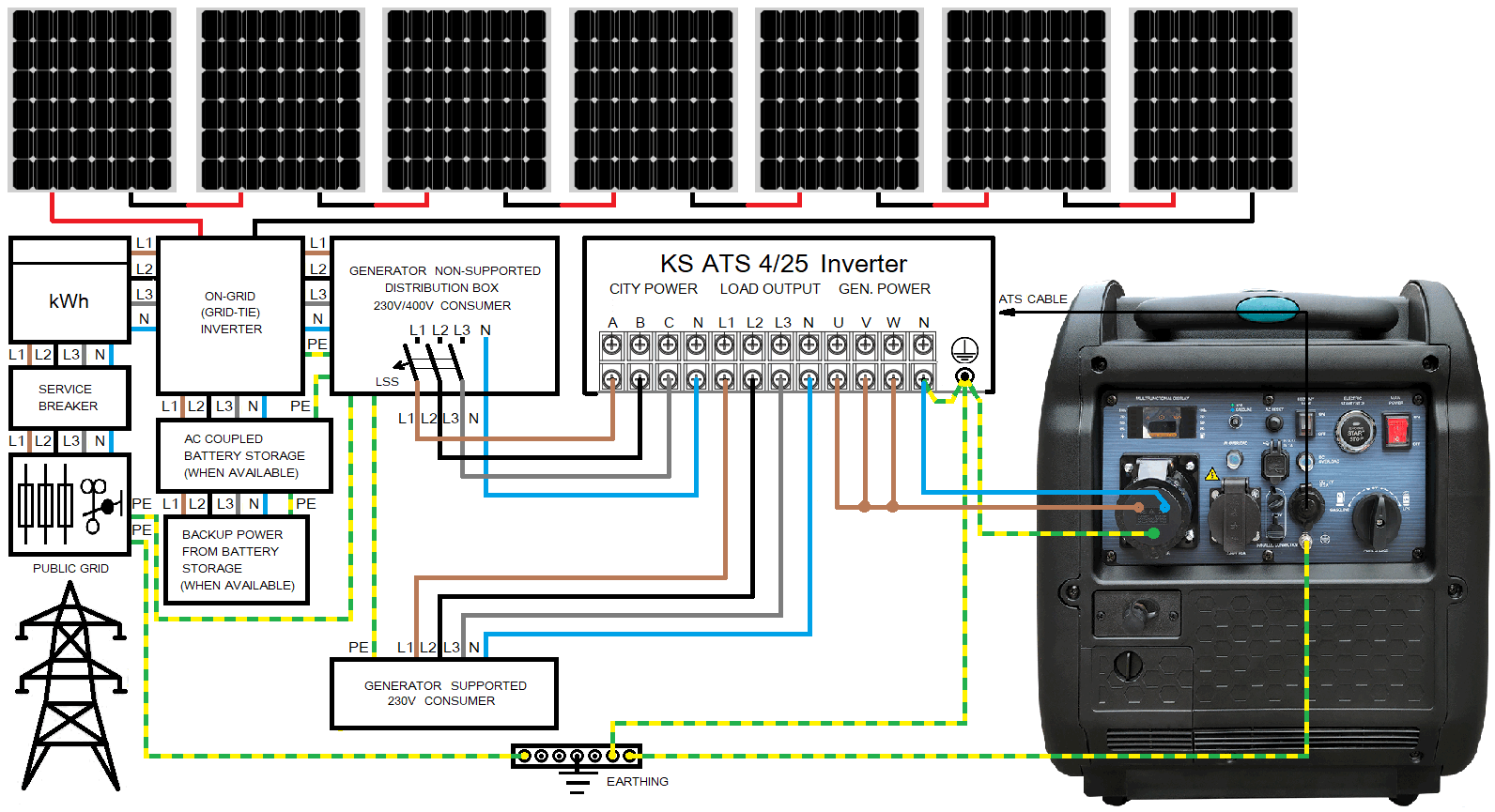
Connection diagram of the 230V backup power supply for solar system with the inverter generator KS 8100iE ATSR with an external ATS unit KS ATS 4/25 Gasoline:
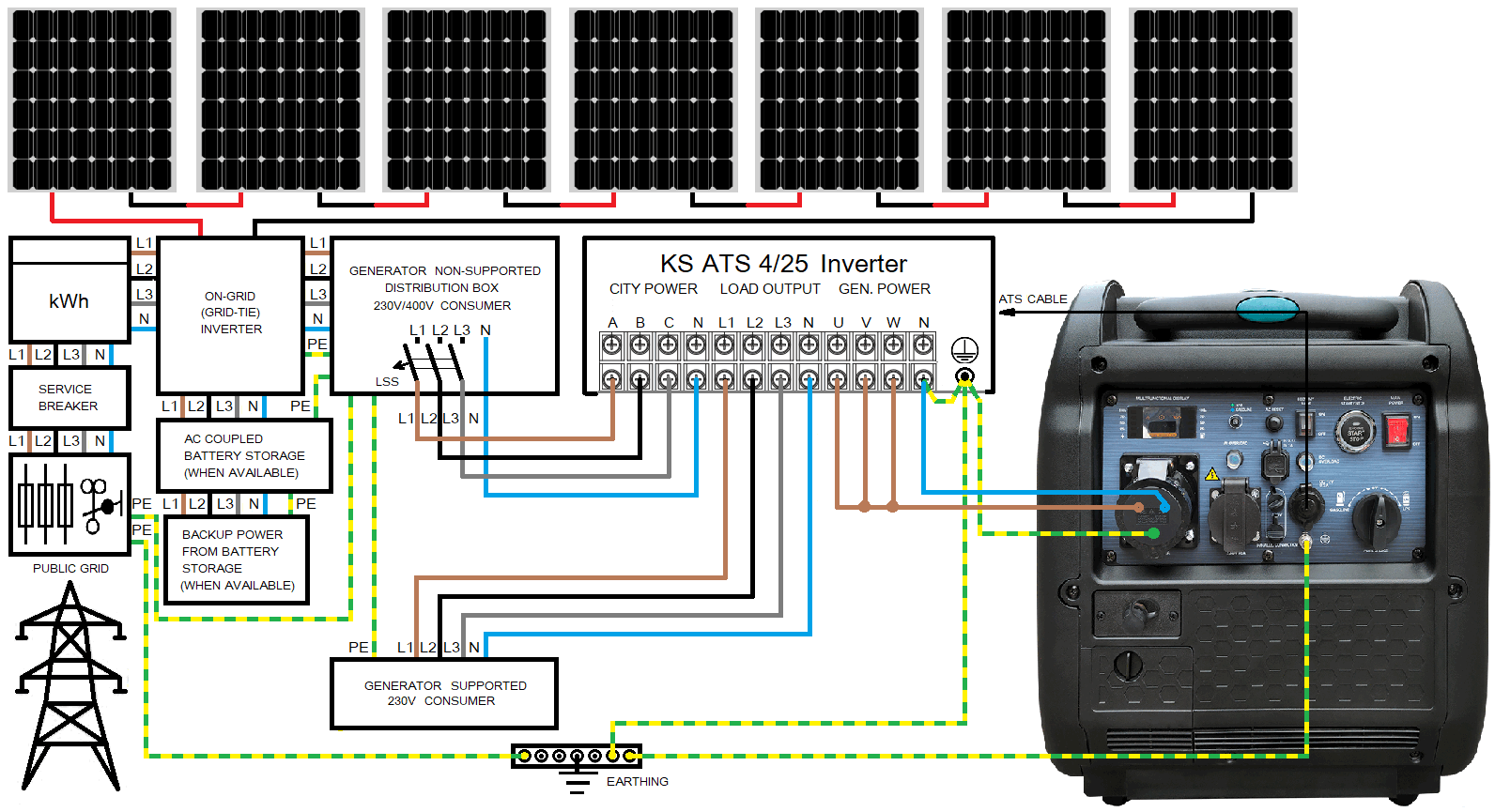
The backup power supply in all the cases described above is 230V. In this way, almost all electricity consumers in the house can be supplied in the event of a power failure. Three-phase consumers (if present) must be supplied separately. 3-phase power consumers with electronic control usually need a "clean" sine wave, which a conventional power generator cannot generate. More information about 230V and 400V backup power supply can be found in our information material.
If the generator is not to be permanently installed or is located far from the transfer switch, we recommend using our unique inverter generators with internal ATS module. However, this requires the use of an external priority automatic transfer switch on one side.
The generator monitors the voltage in the socket, which is connected bevor the switch and protected by a circuit breaker and an RCD or by RCBO (overload and contact protection in one). This socket without the connected generator can be used as a normal outdoor socket. This socket is de-energized during a power outage and this is critical to ATS control of the generator. It is a signal to start the generator.
Connection diagram of the 230V backup power supply for solar system with the inverter generator KS 6000iES ATS Version 2, in which the MAINS INPUT monitors the 230V, but does not forward it to the output in waiting mode:
![Diagram of the backup power supply for solar system with the KS 6000iES ATS Version 2 [1]](../../../source/solar-ups-generators/notstrom_fur_pv/pvanlage-pvspeicher-4-en.png)
The generator on the circuit diagram is not permanently installed, but connected to the pre-installed socket and the CEE 230V 32A inlet as required. This means that the generator can also be used on the move if required. A fixed installation is of course also possible, but you need a suitable room and an exhaust system for this.
The generator is connected to the N-side of the automatic transfer switch, which has priority switching, so when the main power returns, the switch does not switch to the utility grid immediately, but only when the generator shuts off its output. The KS 6000iES ATS version 2 generator analyzes the voltage at its MAINS INPUT connection for about 1 minute and only then switches off the output and thus enables switching to the main power supply. This corresponds to the regulation according to which an automatic switching device must not switch over to the public power grid immediately, but with a delay of 1 minute.
Automatic operation is only possible with the KS 6000iES version 2 (without switching through from MAINS INPUT to the output). The ATS function should be activated so that the generator starts automatically if there is no longer any voltage in the socket and accordingly there is no longer any voltage at MAINS INPUT.
Hybrid inverters with a PV DC storage system switch to backup power operation in the event of a power failure. In the process, the energy supplied by the solar cells and stored in the PV storage unit is used up.
Solar systems with a hybrid inverter usually have a battery bank with smaller capacities, as these are only intended to store the excess energy for use at night, etc. But what do you do when the sun is not shining and the stored energy is used up? Then you need a generator.
In this case, we recommend charging the power storage (DC only) from a backup power generator so that the hybrid inverter can continue to supply the house as usual.
The power storage is charged either from an AC generator with a charger or from a DC generator. The charger or the DC generator must match the PV power storage.
Connection diagram of the backup power supply for solar system with the inverter generator KS 6000iES ATS Version 2, in which the MAINS INPUT monitors the 230V, but does not forward it to the output in waiting mode
![Diagram of the backup power supply for solar system with the KS 6000iES ATS Version 2 [2]](../../../source/solar-ups-generators/notstrom_fur_pv/pvanlage-pvspeicher-5-en.png)
The battery voltage control unit monitors the battery voltage and interrupts 230V to the Schuko socket if the battery voltage falls below the set value. The generator starts and supplies the AC voltage to the charger, which in turn charges the power storage unit to provide sufficient energy for the inverter.
The KS 6000iES ATS is equipped with a lithium battery that is charged as long as 230V is present at the MAINS INPUT or the generator is running. The battery is always charged and ready for use. The lithium battery has little capacity, but has a high starting current and is recharged relatively quickly after the generator is started.
ATTENTION!
Such a circuit diagram is only possible with the generator KS 6000iES ATS version 2! Depending on the design of the charger (depending on the power factor and the type of current consumption), the charging capacity according to such a circuit diagram can be up to 2-4 kW..
In systems with energy management, only the charging process of the PV storage is often taken into account by the MPPT controller. Ask the manufacturer of your inverter whether charging the battery bank from an external DC power source is technically permissible and does not cause any errors.
Such a DC power source should function as a charging module with an IU characteristic, which makes the use of a pure DC voltage source not possible. Such a charger or charging module should have a so-called "Maximum Power Point" where the voltage comes down when the output current reaches the maximum value. The task of the charging module is not to fully charge the battery, but at least partially so that the power supply can be maintained. Full charging of the battery is done from solar panels through the charge controller.
The backup power supply by charging the battery storage has clear advantages with regard to the power consumers to be supplied. Power is still supplied with a "clean" sine wave that generates the inverter. The maximum power is still determined by parameters of the inverter and the power storage. The generator only has to top up with sufficient energy.
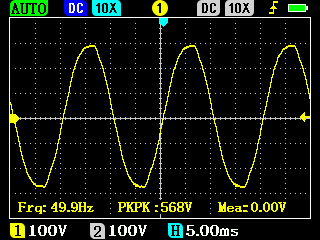
DSO grid voltage form
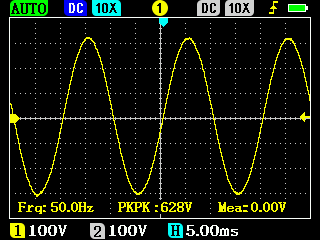
Inverter voltage form
In systems where the power consumption is not constant (e.g. a house or an office) the generator will not run continuously, but only as required. After the battery has been charged up to the voltage set on the battery monitor, the generator switches off and the electricity consumers are supplied by the battery via the inverter. In this way, uninterrupted power supply is possible in the long term, which is very important in the event of a prolonged power outage. The generator runs with breaks and also has time to cool down. The fuel is also used optimally because the engine does not have to run without a load.
Off-grid inverters do not feed into the public grid and only supply the connected electricity consumers. These inverters work in conjunction with DC power storage and typically have a connection for an external AC power source that can provide power when needed.
Depending on the setting of the inverter, this external AC source must also be able to supply sufficient energy to charge the battery. In this context, some inverters have an extra setting that restricts the total power that the inverter can draw from an external AC power source. This power is then divided between the DC battery storage and the power consumers to be supplied.
Charging the batteries with a high power from an AC power source has specifics that must be considered, especially when using a generator. The reactive power and transient processes generated during the charging process can damage the generator.
Most AC/DC chargers or charging modules have a pulse-like current consumption on the AC side and charge the battery storage device in a pulse-like manner:
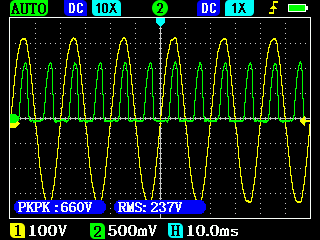
Current draw (in green) of the charger
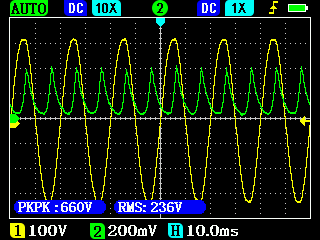
Charging current (in green) of the battery
The AC voltage is shown in yellow. In the case of chargers or charging modules without power factor correction, only the maxima of the sine wave are consumed.
Charging the battery via the charging module installed in the inverter often has the same problem. The battery is charged extremely impulsively:
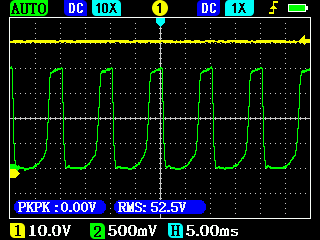
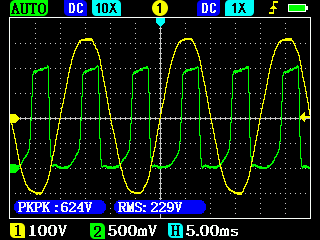
In yellow on the left is the battery voltage and on the right is the mains voltage. In green is the charging current measured at the battery cable when charging via the inverter.
The charging current of such charging modules is regulated by pulse width, which can exacerbate the problem of uneven loading of the sine wave:
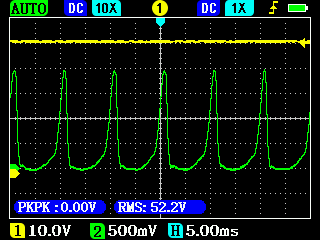
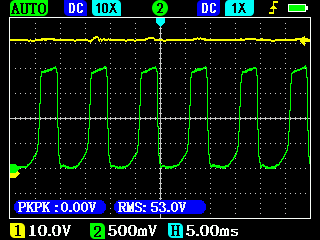
The power storage of the PV system is charged with 100 pulses per second (at 50Hz voltage). In such a case, the system must not be calculated with RMS values alone, but one must also take instantaneous amplitudes into account.
Pulse current consumption has a power factor of 0.5-0.7, which can lead to high reactive power. If you feed the charger or the charging module of the inverter from the utility grid, it is compensated by other electricity consumers in the utility grid. It is different when using an generator.
A generator and electricity consumers form a closed system, the elements of which affect each other and it is very important that they fit together and the system does not oscillate
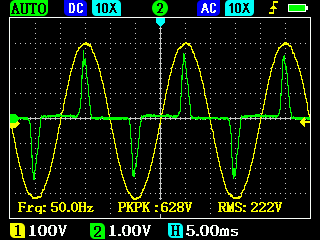
Generator with inverter technology
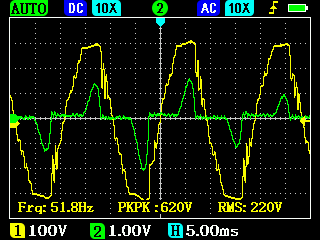
Conventional generator
Pulse-like current consumption means that, in the best case, you cannot use more than half of the nominal generator power and extra measures must be taken against the harmonics caused by pulse-like current consumption in order to stabilize the circuit.
In practice, it often leads to unstable operation of the charging module and even damage to the generator such as overheated windings, broken voltage regulator or inverter module.
In most cases, off-grid inverters switch the external power source through and load it in pulses to charge their own PV storage system, which can distort the voltage form of a conventional generator to such an extent that it can affect sensitive power consumers.
We recommend using inverter generators as an external AC source for backup power supply from off-grid inverters, which can maintain their voltage form much better, which can be very important for sensitive electricity consumers.
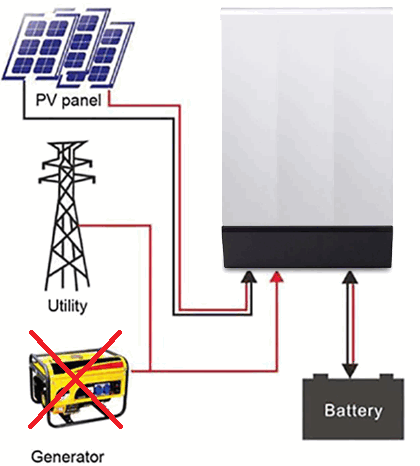
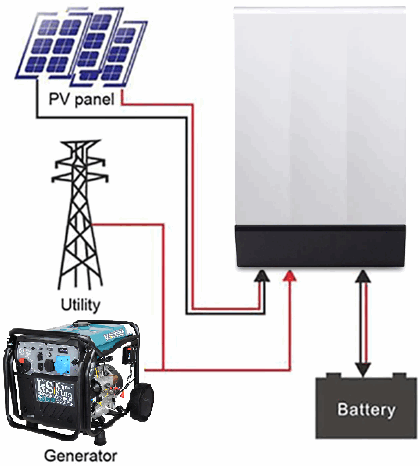
Connection diagram of the 230V backup power supply for solar system with the Inverter Generator KS 6000iES ATS Version 2, in which the MAINS INPUT monitors the 230V, but does not forward it to the output in waiting mode:
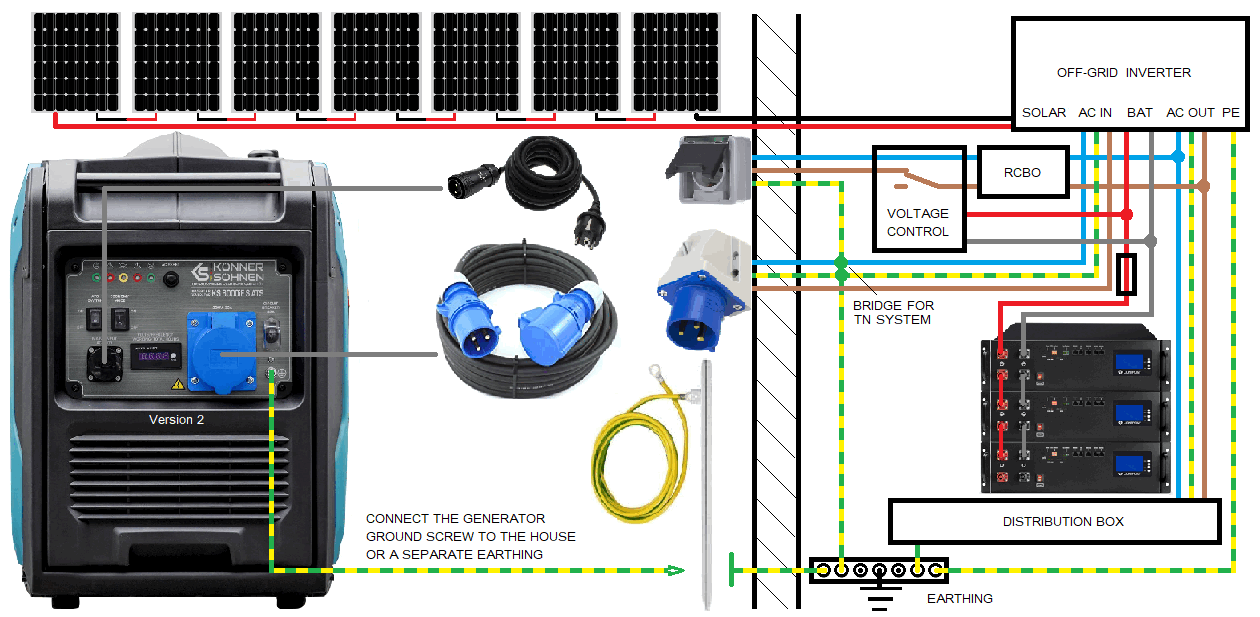
This solution is ONLY to be used with off-grid inverters and power islands!
The KS 6000iES ATS version 2 inverter generator starts up as soon as the battery voltage control unit interrupts the 230V voltage branched off from the inverter output to the MAINS INPUT of the generator and stops when it comes back.
It should be noted that the generator must provide the energy both for the electricity consumers to be supplied and for charging the electricity storage device.
In the case of off-grid solutions with an off-grid inverter, the power storage (DC) can be charged by an generator + charger, just like in systems with hybrid inverters. In this way, the 3-phase power supply from the inverter can continue to run.
Connection diagram of the backup power supply for solar system with the Inverter Generator KS 6000iES ATS Version 2, in which the MAINS INPUT monitors the 230V, but does not forward it to the output in waiting mode:
![Backup power supply for solar system with KS 6000iES ATS Version 2 [3]](../../../source/solar-ups-generators/notstrom_fur_pv/pvanlage-pvspeicher-13-en.png)
The DC battery storage can also be charged directly from a suitable DC generator if this is technically possible for the respective PV system.
Example of using the KS 48V-DC in a power island solution:
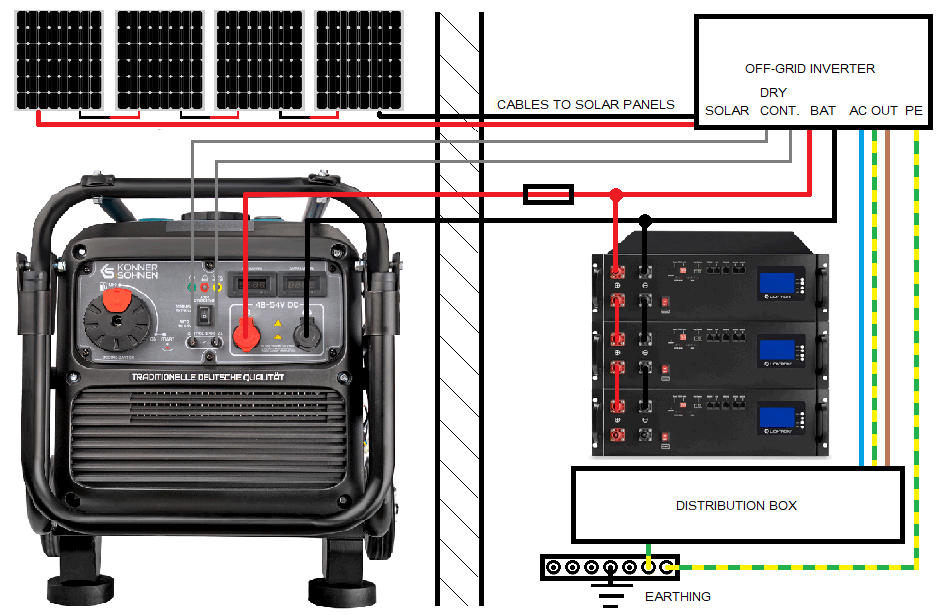
Example of using the KS 48V-DC with a hybrid inverter with the 48V power storage:
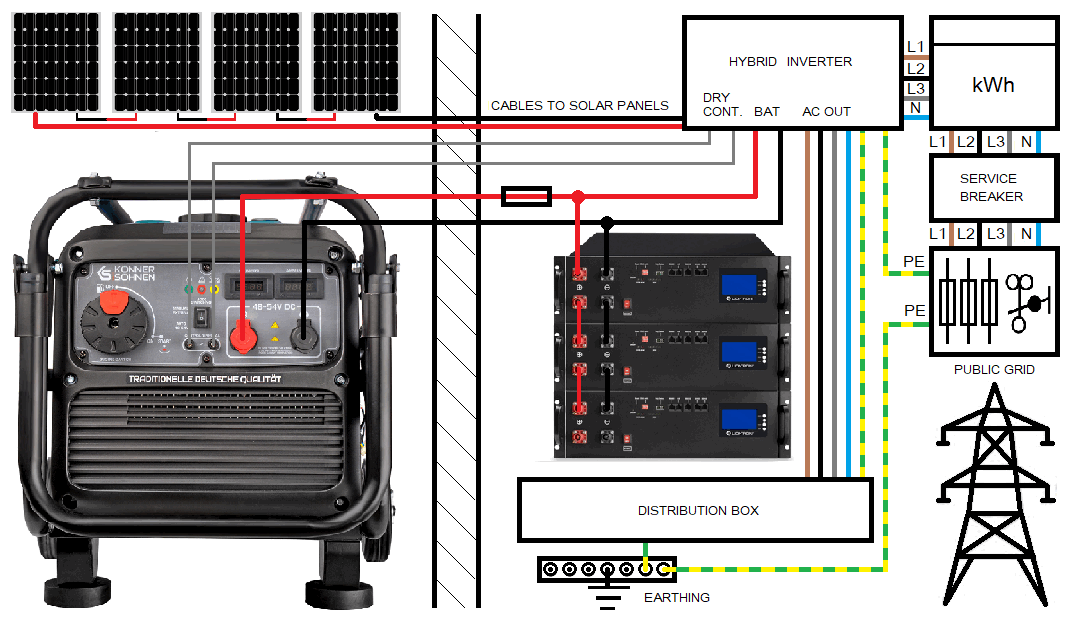
The direct current generator is connected directly to the 48V power storage device in order to charge it directly.
The KS 48V-DC can either monitor the battery voltage itself or be controlled externally by „dry” contacts.
The generator starts in AUTO mode when the lower voltage value of 48V is reached, charges the battery with the voltage up to 54V and with the current up to 70A and turns off when the voltage reaches 53.5-54V and the charging current falls below 20A comes. The generator can also be started and stopped manually or externally by PF contacts, allowing different applications and integration into existing systems. The generator does not have its own battery and uses the energy from the battery to be supplied to start in AUTO and EXTERN CONTROL mode. Manual starting with the pull starter is also possible.
Examples of supported 48V DC battery storage:
- 4 AGM batteries connected in series with the voltage range approx. 48-54V
- Batteries with 14 LiIon cells connected in series with the voltage range approx. 47-56V
- Batteries with 16 LiFePo4 cells connected in series with the voltage range approx. 48-54V
- Batteries with 15 LiFePo4 cells connected in series with the voltage range approx. 45-51V (EXTERNAL CONTROL mode recommended).
Depending on the power storage and inverter, either AUTO or EXTERNAL CONTROL mode should be used. The function of the generator is to serve as a reserve power source and, if necessary, to load a few kWh of energy into the DC battery storage so that the power consumers to be supplied by the inverter remain supplied even when there is too little energy from the sun and without power from the DSO network (power island solution or power grid failure). So the generator usually runs about 1-2 hours and is switched off. The house is powered by the DC battery storage, which can also compensate for power peaks when the generator is running.
A house usually consumes only a few hundred watts continuously and only when a powerful device is switched on does the electricity consumption increase by a few kW, at which point the energy can come from both the generator and the battery storage because the two run in parallel. In this way, the power consumption can for a short time exceed the output of the generator and the power supply to the house can continue as usual.
The generator in AUTO mode switches off when the current falls below 20A. Response time about 30 seconds. If the power consumption in the house is constantly above 1 kW, we recommend using the EXTERNAL CONTROL mode or switching off the generator manually.
Thanks to different operating modes, the generator can be integrated into different power supply systems.
A DC generator is much more fuel efficient and allows for uninterrupted backup power for several days as the generator runs on breaks and has enough time to cool down.
The DC generator performs the same function as a solar panel + charge controller and is much more effective than the "AC generator + charger" combination. The charging current from the DC generator is not impulsive (there is only ripple) and thus at the same maxima much higher effective value is reached, which is also very important for batteries and BMS controllers (for lithium batteries).
The DC generator has multiple windings and electronic control, which makes the output current much smoother. This is how the charging current (in green) of a LiFePo4 battery (an extreme case) at 40A and 70A current (rms value) looks like:
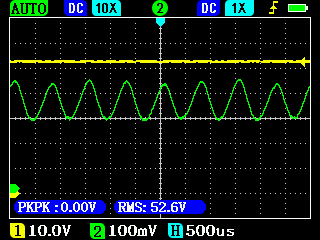
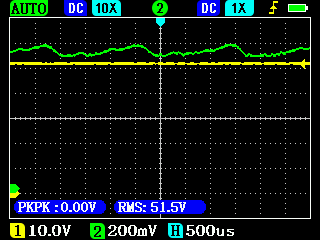
The DC generator output voltage ripple is low, which can still cause charging current ripple in a LiFePo4 battery. As the charging current increases, the difference between the battery's own voltage and the generator's voltage increases, which can lead to a reduction in the charging current ripple.
A DC generator to charge the batteries is a good solution from all points of view and in some cases there is no better, if any, alternative.
Several KS 48-DC can be connected in parallel to increase the overall performance or to secure the power supply for a longer period of time.
All KS 48-DC are connected to the 48V busbar, to which other DC sources, power storage and inverters are also connected.
Depending on the power required, a certain number of generators can be activated by external control, run alternately, etc.
If all DC generators connected to the 48V busbar are in AUTO mode, only one generator will start, with the control electronics reacting a little earlier, and the others will only be started if necessary, e.g. if the power from the first generator alone is not sufficient and the battery storage voltage continues to drop, or if a fault has occurred in the first generator. So the DC generators will support each other, so to speak, to maintain the voltage on the 48V busbar.
This property is very important in systems where several kW of power are required. You simply use several KS 48-DC to safely cover the power requirement. Whereby part of the generators can remain as a reserve in case one of the active DC generators experiences a malfunction (e.g. out of petrol).
Here is an example of how to use multiple KS 48-DC at once:
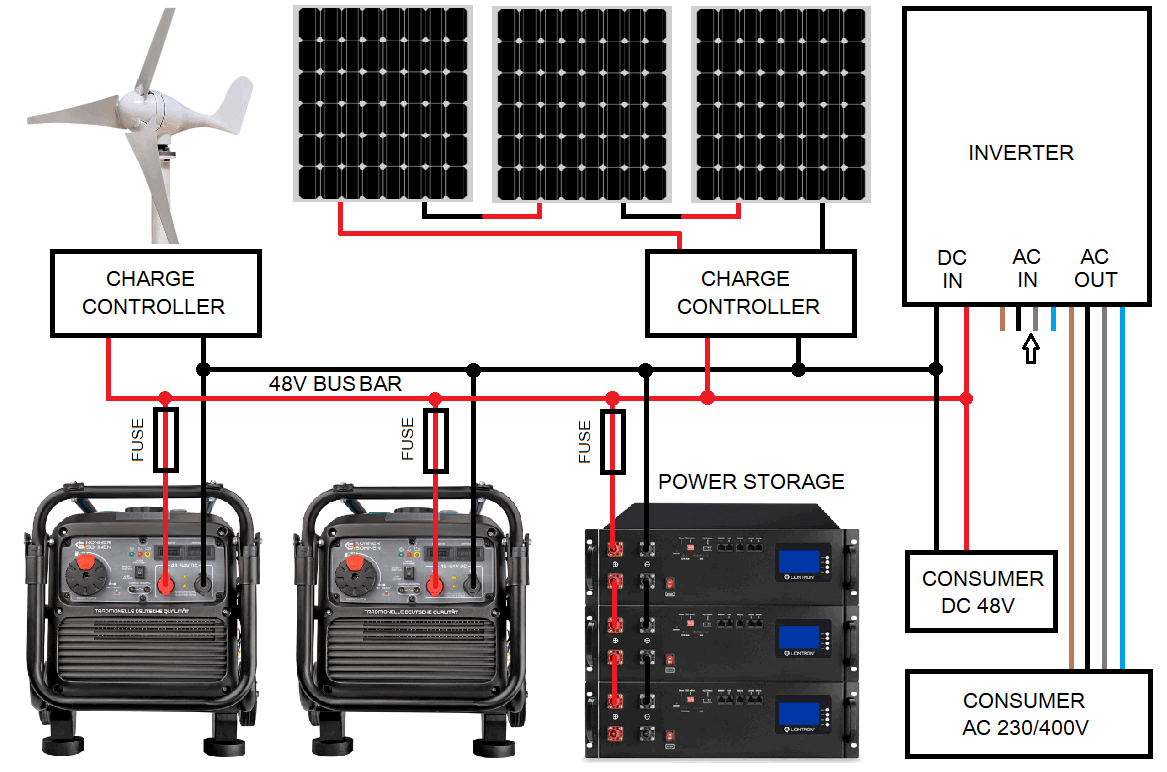
Disclaimer
These instructions can only be taken as a recommendation, are illustrative and must be adapted to the exact local circumstances and conditions during installation. The installation itself should be made in compliance with all standards and regulations. We take no responsibility for the wrong installations and their consequences.



